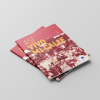This event began with a visit to a pilot project developed by UN Habitat in cooperation with the Metropolitan Government Agency of Medellín and Despacio, following a discussion panel regarding the adoption of electric vehicles and advances in mobility.
Electric vehicles can be a way to reduce emissions. Energy Technology Roadmap estimates that low-carbon emission technologies and fuels, including electric vehicles, by 2050 will constitute at least 30% of the reduction of carbon emissions of light vehicles.
The significant adoption of electric vehicles depends on a number of a factors, for example: technological advances of vehicles and batteries and the reduction of the cost of these vehicles and batteries through economies of production, the availability of an electric charging infrastructure, the increase in public awareness and government incentives, including by local governments.
This event brought together industry leaders with urban policy consultants to explore possible strategies and increased collaboration between the private sector and governments to incentivize the appeal of electric vehicles as well as contribute to the reduction of greenhouse gases.
We discussed a number of aspects of electric mobility such as the life-cycle assessment and potential differences in this if energy is produced through hydroelectric or thermoelectric means. We analyzed different pilot projects underway in various countries and how these have shown savings in the operation of electric vehicles when compared with conventional gasoline or diesel-based ones. We then explained some of the economic and tax incentives developed by the Colombian government for hybrid and electric vehicles (given that their high initial cost hinders their selection by drivers) and how these incentives have resulted in some bus fleets using these cleaner technologies. We discussed as well the “green traffic jam” and the lack of coordination between transportation and environmental entities.
The following were the presentations
Oliver Lah del Wuppertal Institute
Paula Rodriguez de Despacio
Elegtric
Adalberto Maluf de C40









Comentarios recientes